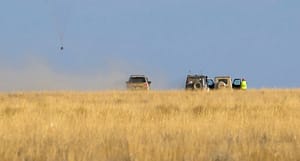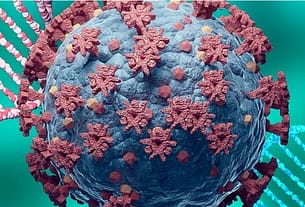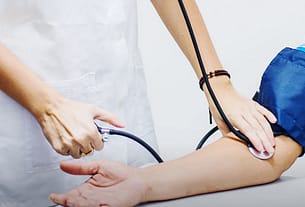When Nasa astronaut Frank Rubio just returned from a record-breaking 371 days in space onboard the ISS, the trip may have altered his muscles, brain and even the bacteria living in his gut.
When Nasa astronaut Frank Rubio bid farewell to the American-football-field-sized collection of modules and solar panels that has been his home for the past 371 days. His departure from the International Space Station (ISS) and return to Earth marks the end of the longest single spaceflight by an American to date.
Rubio clocked up a total of 5,963 orbits around the Earth, travelling 157.4 million miles (253.3 million km). But it still means he is around two months short of the record for the longest ever spaceflight by a human – Russian cosmonaut Valeri Polyakov spent 437 days onboard the Mir Space Station in the mid 1990s.
With a huge grin on his face, Rubio was carried from the Soyuz MS-23 spacecraft after it bumped safely back to Earth in a cloud of dust near the town of Zhezkazgan in the Kazakhstan Steppe. Spending so much time in the low gravity environment of the ISS will have taken a toll on his body, so he had to be lifted out of the capsule by the recovery teams.
His extended trip in space, however, will provide valuable insights into how humans can cope with long-duration spaceflight and how best to counteract the problems it can present. He is the first astronaut to participate in a study examining how exercising with limited gym equipment can affect the human body.
It is information that will prove vital as humans set their sights on sending crews on missions to explore deeper into the Solar System. A return journey to Mars, for example, is expected to take around 1,100 days (just over three years) under current plans. The spacecraft they will travel in will be far smaller than the ISS, meaning smaller lightweight exercise devices will be needed.
But problems keeping fit aside, just what does spaceflight do to the human body?

Muscles and bones
Without the constant tug of gravity on our limbs, muscle and bone mass quickly begins to diminish in space. The most affected are those muscles that help to maintain our posture in our back, neck, calves and quadriceps – in microgravity they no longer have to work nearly as hard and begin to atrophy. After just two weeks muscle mass can fall by as much as 20% and on longer missions of three-to-six months it can fall by 30%.
Similarly, because astronauts are not putting their skeletons through as much mechanical strain as they do when subject to Earth’s gravity, their bones also start to demineralise and lose strength. Astronauts can lose 1-2% of their bone mass every month they spend in space and up to 10% over a six-month period (on Earth, older men and women lose bone mass at a rate of 0.5%-1% every year). This can increase their risk of suffering fractures and increase the amount of time it takes to heal. It can take up to four years for their bone mass to return to normal after returning to Earth.
To combat this, astronauts undertake 2.5 hours a day of exercise and intense training while in orbit on the ISS. This includes a series of squats, deadlifts, rows and bench presses using a resistive exercise device installed in the ISS’s “gym”, alongside regular bouts tethered to a treadmill and on an exercise bike. They also take diet supplements to help keep their bones as healthy as possible.
A recent study, however, highlighted that even this exercise regime was not enough to prevent losses in muscle function and size. It recommended testing whether higher loads in resistance exercises and high intensity interval training might help to counteract this muscle loss.
The lack of gravity pulling down on their bodies can also mean that astronauts find they grow a little taller during their stay on the ISS as their spines elongate slightly. This can lead to issues such as back pain while in space and slipped disks once back on Earth.
Weight loss
Although weight means very little while in orbit – the microgravity environment means anything not tethered down can float around the ISS habitat freely, including human bodies – maintaining a healthy weight is a challenge while in orbit. Although Nasa tries to ensure its astronauts have a diverse range of nutritious foods, including most recently a few salad leaves grown on board the space station, it can still affect an astronaut’s body. Scott Kelly, a Nasa astronaut who took part in the most extensive study of the effects of long-term spaceflight after staying onboard the ISS for 340 days while his twin brother stayed back on Earth, lost 7% of his body mass while in orbit.
Neural shuffling
After his long stay on the ISS, however, Kelly’s cognitive performance was found to have changed little and had remained relatively the same as his brother’s on the ground. However, researchers did notice that the speed and accuracy of Kelly’s cognitive performance did decrease for around six months after he landed, possibly as his brain readjusted to the Earth’s gravity and his very different lifestyle back home.
A study on a Russian cosmonaut who spent 169 days on the ISS in 2014 also revealed some changes to the brain itself seem to occur while in orbit. It found there were changes in the levels of neural connectivity in parts of the brain relating to motor function – in other words, movement – and also in the vestibular cortex, which plays an important role in orientation, balance and perception of our own motion. This is perhaps unsurprising given the peculiar nature of weightlessness while in space; astronauts often have to learn how to move efficiently without gravity to anchor them to anything and adjust to a world where there is no up or down.
Friendly bacteria
It is apparent from research in recent years that a significant key to good health is the make up and diversity of the microorgansims that live in and on our bodies. This microbiota can influence how we digest food, affect the levels of inflammation in our bodies and even alter the way our brains work.
Researchers examining Kelly after his trip to the ISS found that the bacteria and fungi living in his gut had altered profoundly compared to before he flew into space. This is perhaps not entirely surprising, given the very different food he was eating and the change in the people he spent his days with (we obtain a horrifying amount of gut and oral microorganisms from the people we live alongside). But exposure to radiation and the use of recycled water, along with changes to his physical activity could all also have played a role.
Skin
Although there have now been five Nasa astronauts who have spent more than 300 days in orbit, we have Kelly to thank again for insights into how his skin fared while in orbit. His skin was found to have heightened sensitivity and a rash for around six days after he returned from the space station. Researchers speculated that a lack of skin stimulation during the mission may have contributed to his skin complaint.
Genes
One of the most significant findings from Kelly’s prolonged journey into space were the effects it had on his DNA. At the end of each strand of DNA are structures known as telomeres, which are thought to help protect our genes from damage. As we age, these get shorter, but research on Kelly and other astronauts has revealed that space travel seems to alter the length of these telomeres.
“Most striking, however, was the finding of significantly longer telomeres during spaceflight,” says Susan Bailey, a professor of environmental and radiological health at Colorado State University who was part of the team studying Kelly and his brother. She has done separate studies with another 10 unrelated astronauts who have taken part in shorter missions of around six months. “Also unexpected was that telomere length shortened rapidly on return to Earth for all crewmembers. Of particular relevance to long-term health and ageing trajectories, astronauts in general had many more short telomeres after spaceflight than they did before.”
There were also some changes in gene expression – the mechanism that reads the DNA to produce proteins in cells – seen in Kelly that may have been related to his journey into space. Some of these related to the body’s response to DNA damage, bone formation and the immune system’s response to stress. Most of these changes, however, had returned to normal within six months of his return to Earth.
Immune system
Kelly received a series of vaccines before, during and after his trip into space and his immune system was found to react normally. But Bailey’s research has found that astronauts do suffer some decreases in white blood cell counts that fall in line with the doses of radiation they receive while in orbit.
There are still many questions to be answered, however, about what impact space travel can have on a bipedal, big-brained species that evolved to live on Earth. As Rubio recovers from his 371 days in space, researchers will doubtlessly be poring over his medical tests, blood samples and scans to see what more they can learn.
On Earth, gravity helps to force the blood in our bodies downward while the heart pumps it up again. In space, however, this process becomes messed up (although the body does adapt somewhat), and blood can accumulate in the head more than it normally would. Some of this fluid can pool at the back of the eye and around the optic nerve, leading to oedema. This can lead to changes in vision such as decreased sharpness and structural changes in the eye itself. These changes can start to occur after just two weeks in space but as that time goes on, the risk increases. Some of the vision changes reverse within about a year of astronauts returning to Earth, but others can be permanent.
Exposure to galactic cosmic rays and energetic solar particles can also lead to other eye problems. The Earth’s atmosphere helps to protect us from these but once in orbit on the ISS, this protection disappears. While spacecraft can carry shielding to help keep out excess radiation, astronauts onboard the ISS have reported seeing flashes of light in their eyes as cosmic rays and solar particles hit their retina and optical nerves





